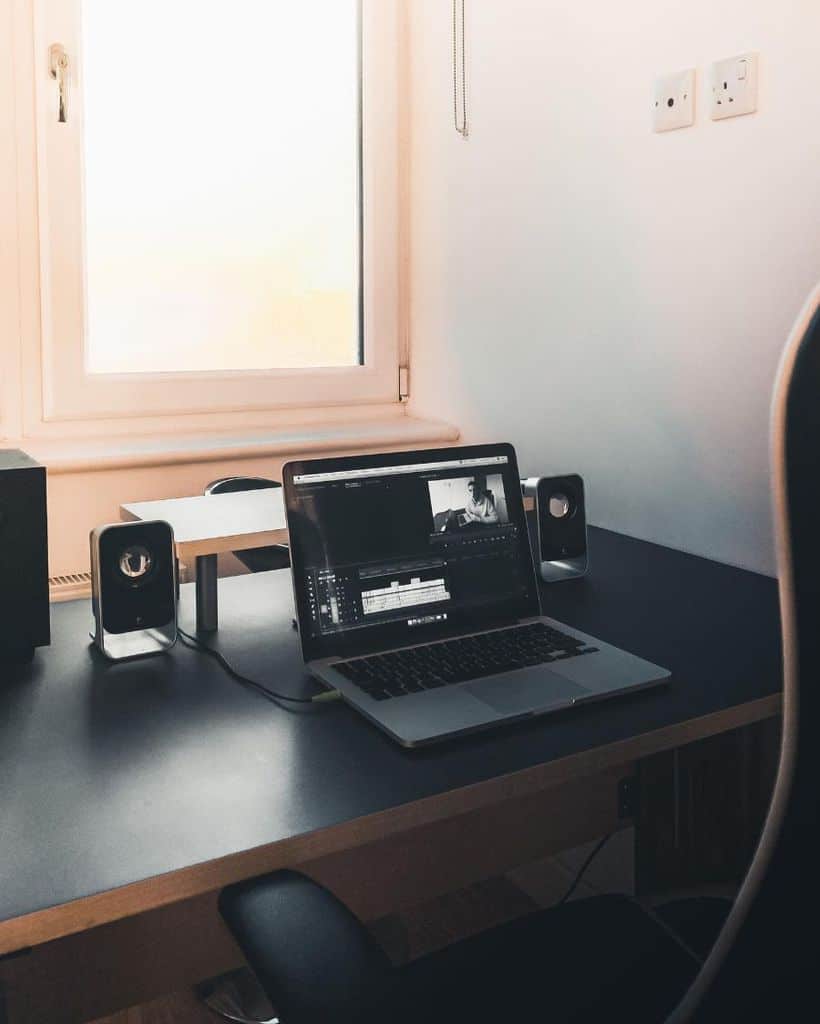Creating a Simplicity-Centric Workspace for Maximum Productivity

Embracing a Simplicity-Centric Workspace
In the modern professional landscape, a workplace that prioritizes simplicity is rapidly becoming a cornerstone for productivity. The hustle and bustle of daily office life can create a chaotic atmosphere, leading to increased stress levels and a noticeable decline in efficiency. By implementing a simplicity-centric workspace, individuals can create an environment conducive to enhanced focus and motivation, facilitating better outcomes in their work.
Key Elements of a Simplicity-Oriented Workspace
When designing a workspace that embraces simplicity, there are several key aspects to consider that can significantly impact productivity:
- Declutter – Taking the time to remove unnecessary items is crucial. Studies indicate that physical clutter can cause mental clutter, distracting individuals from their tasks. Consider utilizing cable management solutions, desktop organizers, or simply conducting regular clean-ups to maintain a tidy workspace.
- Minimalist Design – Selecting furniture and décor that feature clean lines and prioritize functionality can greatly enhance the workspace’s atmosphere. Think sleek desks without excessive adornment and office chairs that provide ergonomic support while maintaining a simple elegance.
- Efficient Technology – Incorporate tools and applications that streamline processes and reduce complexity. For example, using project management software like Trello or Asana can help organize tasks without overwhelming users with convoluted interfaces.
Aesthetic Considerations
The aesthetics of a workspace play a crucial role in creating an inviting and tranquil atmosphere. Numerous studies reveal that an aesthetically pleasing environment can significantly uplift mood and increase productivity.
- Natural Lighting – Maximizing natural light enhances energy and reduces feelings of fatigue. For example, positioning a desk near a window not only brings in sunlight but also provides an uplifting view of the outdoors.
- Color Palette – Stick to calming colors such as soft blues, greens, or neutral tones. These colors, as suggested by psychological research, can evoke feelings of tranquility and focus.
- Smart Organization – Implement storage solutions like shelves and filing systems that keep essential materials easily accessible yet neatly stowed away. This organization minimizes distractions and confusion, allowing for a smoother workflow.
The Bigger Picture
Ultimately, creating a simplicity-centric workspace transcends mere aesthetics; it involves fostering a mindset that champions clarity and effectiveness. By stripping away excess distractions and visual noise, professionals can channel their energy into their core responsibilities. This intentional approach not only leads to heightened productivity but also enhances job satisfaction and accomplishment, making work a more rewarding venture.
In an age where efficiency is key, this framework encourages individuals to rethink their environments. To further explore this concept, readers might find it beneficial to look into resources on ergonomic design or essentialism, both of which emphasize the importance of simplicity in various lifestyle areas.

DISCOVER MORE: Click here for insights on managing your finances effectively
Strategizing for a Clutter-Free Environment
To truly harness the power of simplicity in a workspace, the first step is to focus on decluttering. The environment in which we work significantly influences our mental clarity and productivity levels. According to a recent survey by the National Association of Professional Organizers, a staggering 94% of office workers feel more productive in a clean and organized space. This statistic underscores the importance of removing unnecessary items and distractions that can hinder focus. Establish a routine to regularly assess your workspace and eliminate anything that does not serve a purpose. Simple tools like desktop organizers, filing cabinets, and labeling systems can support this transition by providing designated spaces for essential items.
Transforming the Workspace Layout
Beyond just cleaning, the layout of your workspace is essential in promoting efficiency and creativity. A minimalist design approach can transform a cluttered office into a streamlined haven. Research indicates that environments featuring fewer distractions, including less visual noise, allow for improved concentration and deeper cognitive engagement. When selecting office furniture, opt for pieces that not only look aesthetically pleasing but also enhance your workflow. For instance, a desk with built-in storage reduces the need for additional bulky furniture while keeping the area neat. Moreover, consider the placement of your desk in relation to foot traffic and windows—prioritizing both ease of access and an inspiring view can contribute positively to your focus and motivation.
Leveraging Technology Wisely
In today’s digital age, technology plays a pivotal role in shaping a simplicity-centric workspace. However, the right tools can either enhance or add layers of complexity to our daily tasks. Thus, integrating efficient technology is key. Utilizing tools designed for simplicity, such as clarity-oriented project management software, keeps tasks organized while avoiding overwhelming interfaces. Tools like Slack for communication and Google Drive for document storage streamline collaboration and information sharing without adding unnecessary friction. Regularly evaluate your software and applications to ensure they align with your simplicity objectives—finding digital tools that combine function with clarity can significantly boost your productivity.
The Essence of Aesthetic Serenity
Moving beyond functionality, the aesthetic aspect of your workspace is a vital contributor to overall productivity. The principle of natural lighting stands out in creating a serene working environment. A study conducted by the Heschong Mahone Group found that natural light exposure can improve productivity by as much as 20%. If a window is not an option, consider using full-spectrum light bulbs that mimic daylight, which can enhance alertness and energy levels throughout the workday.
Furthermore, the color palette of your workspace can affect mood and concentration. Calming colors, such as earthy greens and soft blues, help promote a sense of tranquility that aids focus. The strategic addition of plants can also enhance the aesthetic appeal while improving air quality; studies show that greenery can reduce stress and boost overall well-being in a workspace environment.
In summary, the journey towards a simplicity-centric workspace begins with decluttering, reorganizing, and rethinking your environments’ aesthetics. By making these adjustments, you can create an environment that not only minimizes distractions but also enhances your productivity, making each workday feel more fulfilling and less strenuous.
| Advantage | Description |
|---|---|
| Reduced Clutter | A simplicity-centric workspace minimizes distractions by removing unnecessary items, allowing your focus to shift onto essential tasks. |
| Enhanced Efficiency | Creating a streamlined environment facilitates quick access to tools and resources, enhancing overall workflow and productivity levels. |
| Increased Focus | A tidy workspace supports mental clarity, making it easier to concentrate on work at hand and leading to higher quality outputs. |
| Positive Mindset | An uncluttered space contributes to a more positive and calm atmosphere, encouraging productivity and creativity. |
The above table illustrates the key advantages of establishing a simplicity-centric workspace designed for maximum productivity. Each of these benefits underscores the importance of a focused and organized environment that not only boosts efficiency but also enhances your overall work experience. A well-thought-out workspace strategy ultimately enables individuals to tap into their full potential, fostering both personal and professional growth.
DISCOVER MORE: Click here to learn how minimalism can reshape your productivity
Establishing Effective Work Boundaries
Creating a simplicity-centric workspace goes beyond physical arrangement; it requires effective boundaries to maintain focus and preserve mental energy. In an era of constant connectivity, many workers find themselves at risk of distraction from emails, instant messages, and social media. Establishing strict work boundaries can help mitigate this challenge. Designate specific hours dedicated solely to work, during which notifications are muted, and interruptions are minimized. A study by the American Psychological Association highlights that workers can lose approximately 23 minutes of productivity after an interruption.
Additionally, consider implementing a digital detox strategy, where you allocate certain periods during the day for technology-free tasks. For instance, use the Pomodoro technique to break your work into intervals of focused tasks followed by short breaks. This not only cultivates a disciplined approach but also ensures that your cognitive resources are aligned with your productivity goals.
Fostering a Collaborative Yet Simple Environment
While simplicity is often thought of in terms of individual workspace, collaboration in the workplace can also embrace this principle. Implementing collaborative tools that streamline communication can greatly enhance productivity without overwhelming individuals. For instance, cloud-based platforms like Asana or Trello enhance teamwork by creating visually organized project boards that eliminate the chaos of email threads. Utilizing such tools allows team members to remain on the same page and reduces the time wasted on clarifying tasks.
Moreover, encourage open lines of communication that prioritize clarity and brevity. Create a culture where team members feel empowered to share ideas efficiently, cutting down unnecessary meetings. A survey from Wainhouse Research indicates that 70% of workers believe that having too many meetings stifles productivity, highlighting the need for efficiency in team dynamics.
Personalizing Your Simplicity-Centric Space
One often-overlooked aspect of creating a simplicity-driven workspace is the concept of personalization. Incorporating personal touches can foster a sense of ownership and comfort, ultimately leading to increased motivation. Start by integrating a few personal items that inspire you, such as a favorite photograph, motivational quotes, or artwork. However, avoid letting this personalization spiral out of control, as the aim is to keep the environment serene yet reflective of your personality.
Additionally, consider the use of multifunctional furniture that can help streamline space while adding a personal touch. For example, ottomans that serve dual purposes as seating and storage can allow for easy maintenance while still providing an element of style. Similarly, adjustable sit-stand desks can encourage movement throughout the day, merging physical comfort and ergonomic well-being into your personal space.
Prioritizing Mental Well-being Through Mindfulness
Lastly, integrating mindfulness practices into your daily routine can significantly enhance productivity within a simplicity-centric workspace. Engaging in brief mindfulness exercises can heighten focus, reduce anxiety, and enhance overall mental well-being. According to a report by the Centers for Disease Control and Prevention, incorporating mindfulness and meditation into work routines can yield substantial improvements in employee satisfaction and productivity levels.
Consider beginning or ending your workday with short meditation sessions or practicing mindful breathing strategies during breaks. Such activities can help cultivate a sense of calm that spills over into your work, facilitating clarity in thought and execution. By prioritizing mental well-being, you enhance not just your productivity, but also your overall job satisfaction.
DISCOVER MORE: Click here to learn about enhancing your communication skills</p
Conclusion
In the quest for maximum productivity, embracing a simplicity-centric workspace proves to be an invaluable strategy. By creating an organized environment that prioritizes minimal distractions and effective personal boundaries, individuals can reclaim their focus and enhance their creative output. Establishing work parameters, such as designated hours free from digital noise and implementing techniques like the Pomodoro method, lays the foundation for sustained attention and efficiency.
Moreover, fostering collaboration through streamlined digital tools further cultivates a simple yet effective workflow. The integration of platforms such as Asana or Trello empowers teams to communicate effectively, ensuring that essential information is readily available without overwhelming clutter. Personalizing one’s workspace not only adds a touch of individuality but also nurtures motivation and comfort, proving that a simple connection to our work environment can elevate our performance.
Finally, prioritizing mental well-being through mindfulness practices serves as a vital complement to the structural elements of a simplicity-centric workspace. By dedicating time to moments of reflection and calm, employees can significantly enhance both their job satisfaction and overall productivity levels. As workplace dynamics continue to evolve, the call for simplicity becomes increasingly clear. Embrace these principles to foster not just efficient work habits, but also a holistic approach to personal fulfillment in the pursuit of professional success. In seeking simplicity, we can ultimately unlock our true potential.


